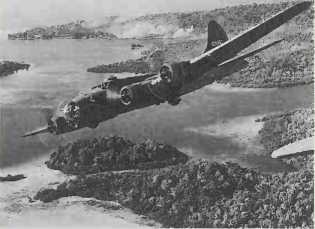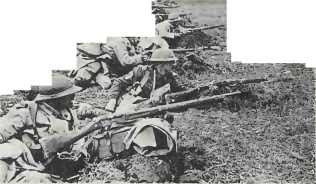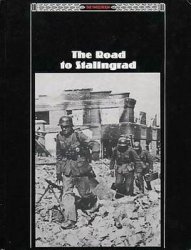Snorkel. Tube by which diesel-electric submarines can proceed on diesels or use them to recharge batteries when submerged at periscope depth, thereby greatly increasing submerged speed and range. Dutch invention adopted first by Germans.
Solid fuel. The best way of fuelling a long-range ballistic missile is with solid mixtures of fuel and oxidant, e. g. polybutadiene acrylic acid, polyurethane or even nitrocellulose and nitroglycerine with ammonium perchlorate. This requires advanced explosive handling techniques and the Soviet Union has lagged behind the USA and France in deploying reliable solid-fuelled missiles. Solid-fuel missiles are easily stored in silos or on board submarines.

Flying Fortress over the Solomons, 1942
Solomon Islands campaign
(1942-44). The twin chain of islands comprising the Solomons lies in the Southwest Pacific east of New Guinea, extending for c900 miles (1,450 km) from northwest to southeast. From early 1942, this British/Australian protectorate was occupied unopposed by the Japanese, to be used as bases for attacks on Australia and on the Allies’ Pacific supply lanes. On August 7 1942, the invasion of Guadalcanal marked the opening of the first Allied offensive in the Pacific, beginning a drive towards the major Japanese base at Rabaul, New Britain. In an attri-tional campaign which, by early 1944, Japan proved unable to sustain, major air and sea battles were fought in the Solomons and some of the most bitter land combat of World War II was waged in their mountainous, malarial, jungle terrain; notably on Guadalcanal; Rendova and Vella Lavella in the New Georgia group (invaded and secured in June—August 1943); and Bougainville and the Treasury Islands (invaded Octo-ber-November 1943). RO’N.
Somaliland, British, Italian invasion of (August 3—18 1940). Italians troops under Lt Gen Nasi defeated the small British garrison at Tug Argan on August 11-12, and forced the territory’s evacuation by the 18th. It was reoccupied by the British in March 1941.
Somaliland, Italian, British invasion of (February 1941). Gen Alan Cunningham advanced from Kenya with 1st South African Division directed on Moyale, and 12th African Division along the coast. The River Juba was crossed on February 19, and Mogadishu, the capital, fell on the 24th.
Somerville, Adm of the Fleet Sir James Fownes (1882-1949). Br. Invalided out of the navy early 1939. Volunteered to help Ramsay at Dover during the Dunkirk operation. Appointed Commander of Force H at Gibraltar, he immediately had the problem of dealing with the French fleet at Mers-El-Kebir. Negotiations failed and heavy damage was inflicted on the French. Force H then took the war to the Italians, fighting convoys through to Malta, repulsing a superior Italian force at Cape Spar-tivento and bombarding the Italian coast. Force H also took part in the abortive attempt at Dakar, and played a vital part in the Bismarck chase. In March 1942 Somerville was transferred to command the new Eastern Fleet in the Indian Ocean, and forced into the uncongenial task of keeping it in. being by avoiding superior Japanese forces. In 1944 he went to Washington as head of the naval delegation. DJL.
Somme, Battles of the (1916 and 1918). In December 1915, it was agreed to mount a joint Franco-British offensive the following year. The decision to attack astride the Somme was made principally because that river marked the junction of the French and British armies on the Western Front, although there were no obvious strategic objectives immediately behind the German lines and the Germans here had built defences

Anglo-French force on Somme, 1918
Of immense strength. When the Battle of Verdun began in February 1916, however, the Somme attack assumed a new importance as a means of relieving pressure on the French Army, another difference being that the British now had the main role in Picardy.
Haig, the British c-in-c, intended that, in the first stage of the offensive, Gen Rawlinson’s Fourth Army should overrun the German front defences from Serre to Mon-tauban, as well as their second position on the high ground between Ginchy, Pozieres and the Ancre, and on the slopes before Miraumont. Once the third position in front of Flers and Le Sars was breached, Bapaume would be threatened and the path opened for Gough’s Reserve Army to advance northward, rolling up the German lines towards Arras. Rawlinson, to whom Haig left the detailed planning and conduct of the attack, was more pessimistic about the prospects of a quick breakthrough, favouring a methodical “bite and hold” advance with the artillery preparing the way for each step. Rawlinson relied on a massive preliminary bombardment to ensure the success of the initial assault and, fearing that the inexperienced soldiers of the New Army divisions could not master subtle tactics, he not only allowed an over-rigid battle plan to be imposed in some corps sectors but also dictated that the infantry should go forward in long, close-formed lines.




 World History
World History









